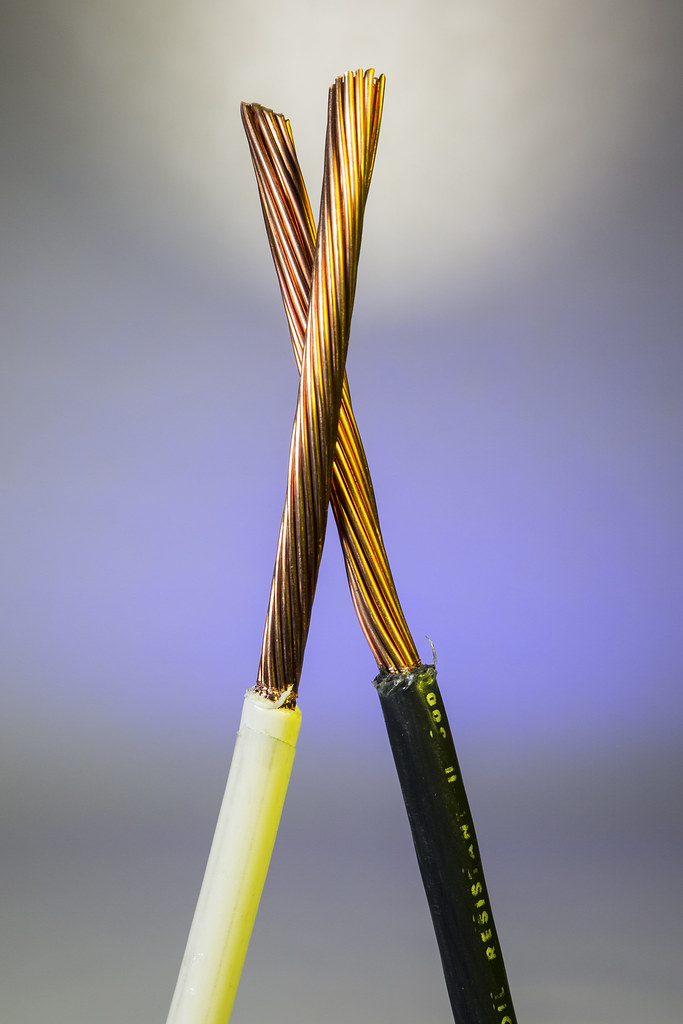Cable vs. wire: What’s the difference?
In the realm of electrical connectivity, the terms “cable” and “wire” are often used interchangeably, leading to confusion. However, these two components serve distinct purposes in various applications. This blog will delve into the intricacies of cable vs. wire, shedding light on their differences and applications.
Composition & Structure
One of the most obvious differences between cables and wires is their structure. Wires consist of a single insulated conductor, most often made of copper or aluminum. Insulation is the plastic layer directly over the conductor. The term “wire” is interchangeable with “insulated conductor”. This conductor can come in various gauge sizes which denote diameter and carrying capacity. Wires are most often used for straightforward electrical connections.
Cables consist of multiple wires grouped together, either layered, twisted, or braided together. They also utilize a central conductor, insulation, shielding, and an outer jacket. Cables are designed to transmit power, data, or other signals efficiently, and offer ease of connection with a singular connector.

Blog: What is a cable gland?
Functionality
Since most wires are just a single conductor with insulation, they’re primarily used for short term connections that serve as a conductor for electrical currents. Circuit boards are a common example of wires being used for this purpose.
Cables can be used for a much wider range of applications simply due to the fact they contain a multitude of wires bundled in a single package. Cables are also suited for transmissions over a significantly longer range than wires due to the insulation, shielding, and outer jacket used.
Applications
The differences in functionality of cable vs. wire determines the range of applications each is suited for. Wires are mostly used within small-scale applications like electronic devices and home electrical wiring.
Cables can serve a much more diverse range of applications like networking, power distribution, and audio-visual transmission. Overall, cables are better suited for longer distances and more complex systems than wires.
Types & Variations
There are two main types of single conductor wire, solid and stranded. Solid wire is a single strand of copper, more effective for conducting electricity. Stranded wire is made from smaller copper strands braided together into a single conductor. This design is more effective in applications with frequent movement, as the stranded design resists breakage better than a solid conductor.
Wires are often made of copper, though other conductive materials like aluminum, gold or silver can also be used depending on application requirements or budget. Of these materials, copper is the most commonly used due to its excellent conductivity, heat resistance, and low cost.
The gauge size of a wire is a major factor when it comes to the power able to be transmitted through the wire. Larger gauges (thicker wire) can carry higher amounts of power, and smaller gauges carry less power.

Creator: Carbon Arc
Copyright: CC BY/NC/SA
There’s much more variety in the forms a cable can take versus a wire. A multitude of different cable types exist, from data and control cables to fiber optic and robotic cables. Each has a unique design, serves a vastly different purpose, and can be designed to withstand various environmental conditions like humidity, extreme temperatures, or exposure to UV radiation.
Flexibility and Durability
Wires tend to be more flexible than cables due to being simpler in design and having just a single conductor. However, this increased flexibility means wires are also more prone to wear and tear, especially in harsh conditions.
Since cables have extra layers of protection like insulation and an outer jacket, they are much more robust than wires and can withstand extreme conditions and rugged environments that wires simply wouldn’t be suited for. They also last longer than wires because of these protective layers, making them ideal in applications where a long-term installation is necessary.
Cost Considerations
In applications where wires are most effective — like those covering short distances in favorable conditions — they are often more cost-effective because of their simple design and lack of extra materials.
Cables, on the other hand, are far more cost-effective in applications that either need to cover long distances or withstand extreme conditions. Even if wires could theoretically be used in such applications, the rate at which they need to be replaced due to failure and/or breakdown would quickly lead to higher costs than a single installation of a more robust cable solution — particularly solutions utilizing continuous-flex cables.
Conclusion
Understanding the distinctions between cable and wire is crucial for making informed decisions in various applications. Whether you're designing a circuit, setting up a network, or installing power systems, recognizing when to use a cable vs. wire is key to ensuring optimal performance and reliability. Clarifying these differences empowers engineers, technicians, and DIY enthusiasts alike to choose the right components for their specific needs, fostering efficient and effective electrical systems.



